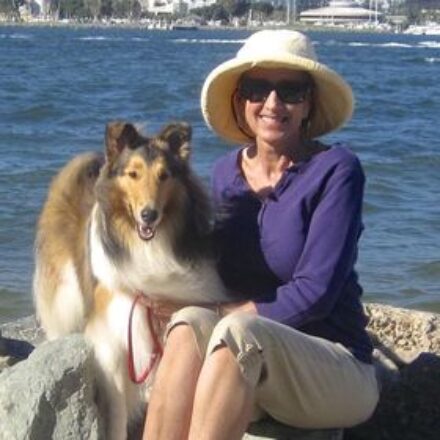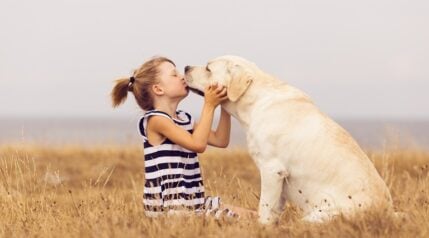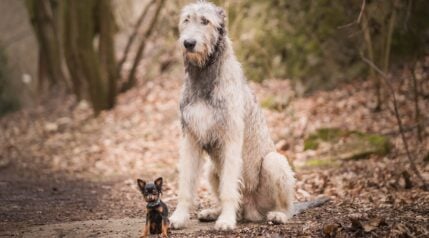You’ve heard the old phrase, “Let sleeping dogs lie,” but is there any truth in that? We take a look at why you shouldn’t bother a dog while he’s sleeping. We also look at why you shouldn’t take a dog’s food away from him when he’s eating. Both these issues are especially important if you have kids in your household. Sleeping pups can get startled when woken, and it can make them just as anxious as when there are other loud noises like noisy holidays.
Sleep Cycles
To understand why you shouldn’t hassle your dog while he’s asleep, we need to learn more about dogs’ sleep patterns. Your average family pet dog needs a lot more sleep than you do. In fact, dogs sleep for between 14 and 16 hours every day. Despite that, your dog has the same sleep cycles as you do. Those sleep cycles are:
- REM (rapid eye movement)
- SWS (short-wave sleep)
Does your dog dream? On average, it takes your dog around 20 minutes to enter the REM sleep cycle. That’s when your dog begins dreaming, and you’ll see your sleeping pet apparently chasing something, twitching, yapping, or even barking. So, yes, dogs absolutely do dream.
Research also suggests that dogs dream more as youngsters and seniors. It’s also thought that the sounds and movements that your dog makes when he’s dreaming correlate directly to the activities he’s enjoyed during his waking hours. For example, if your dog loves to chase a ball or pursue squirrels, you’ll often see him “running” in his sleep, and he may even yip in excitement too.
Waking A Sleeping Dog

The phrase, “Let sleeping dogs lie,” was coined by the great author and poet, Geoffrey Chaucer in the 1300s. The modern interpretation of this commonly used expression means that you should ignore a problem rather than tackle it and risk causing more issues. However, if you take the phrase literally, you must wonder why Chaucer chose that particular analogy.
Waking a dog from a deep sleep could startle him if he wakes suddenly. That could cause the dog to react aggressively by biting the hand that shook him awake. Even the most placid, good-tempered dog can turn on you if he’s startled.
If it’s necessary for you to wake your dog, use only a gentle voice to wake him. Keep your hands and face well away from your dog, just in case he reacts badly to being disturbed. When your dog wakes, give him lots of love and cuddles, especially if he had a bad dream.
Waking Them From Bad Dreams
Although it might be slightly scary to watch your dog when he has a bad dream, most vets think that having a nightmare is a normal process that should be allowed to come to a natural conclusion. Dreams can enable your dog to express and work through his thoughts and feelings, allowing your pet’s subconscious mind to sort through his recent experiences and restore equilibrium.
So, if possible, you should let your dreaming dog lie. However, if your dog has recurrent night terrors when he appears to become extremely distressed, you should have a chat with a dog behaviorist who may be able to suggest a solution.
Seizures vs Normal Rest
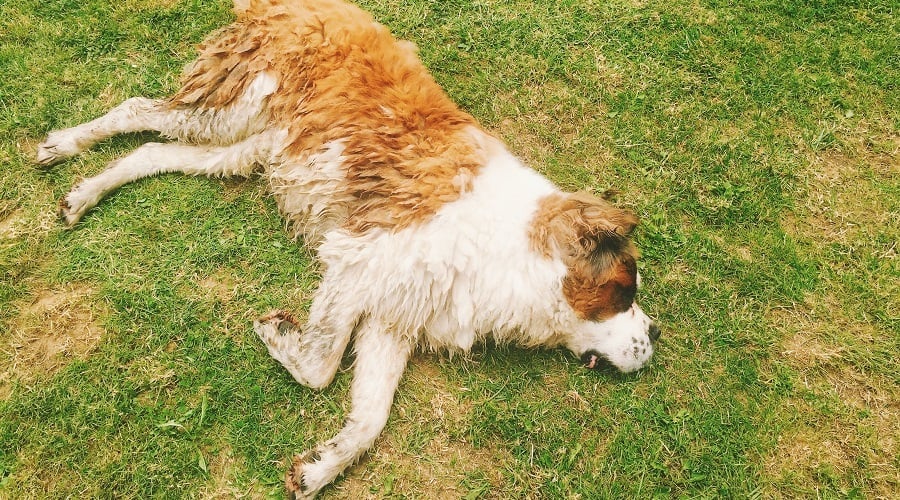
The vast majority of the twitching, spasms, and involuntary movements that you observe when your dog is dreaming are purely as a result of your pet’s dreams. However, if your dog suddenly goes rigid and stiff while he’s asleep, he could be having a seizure.
Signs of a seizure in a sleeping dog include:
- Labored breathing
- Problems taking a breath
- Rigid limbs
- Stiff, extended neck
If you think that your dog is having a seizure while he’s asleep, don’t try to wake your pet. Instead, contact your vet immediately.
Bothering Dogs While Eating Is A Bad Idea

Wild dogs and wolves guard their possessions, especially their food, territory, and mates. That’s a necessary survival behavior that domestic dogs often mimic in a home situation.
What does your dog do if you try to take away a favorite toy? Some dogs will grab the toy and run away with it. Others will growl and flatten their ears. In extreme cases, the dog may bite you or even chase you away! Many dogs only show resource-guarding behavior toward strangers or particular family members.
Dogs guard anything that they consider to be of value, including toys, chew bones, items of your clothing, and even stolen food wrappers from your kitchen trash can.
Dogs That Food Guard
If you get your dog when he’s a puppy, you should train him to accept having his possessions, including his food, taken away from him. You need to teach your puppy that you are the alpha in the household. That means that you can remove any of your pet’s possessions whenever you want to without fear of reprisals.
However, if you have an adult dog who thinks he’s in charge, you’ll need to use the following tips to tackle the problem of food guarding. If you have kids in your household, it’s especially crucial that you instruct them NOT to bother the family dog while he’s eating.
- Always leave your dog alone while he’s eating.
- To allow your dog total privacy while he’s eating, consider feeding him in a separate room, in a dog crate, or behind a physical barrier such as a dog gate. That strategy can help to prevent guarding behavior from becoming exaggerated and potentially dangerous.
- Make sure that your dog has plenty of food. A dog that’s always hungry will be more motivated to guard his food than one who is well-fed.
- If your dog guards food on counters and your dinner table, or if your pet scrounges leftover food on dishes in your dishwasher, you’ll need to manage these situations carefully. Shut your dog out of the room during family meals, be sure to clean up spills, don’t leave food out on your kitchen countertops, and keep your dishwasher door shut.
Preventing Food Guarding
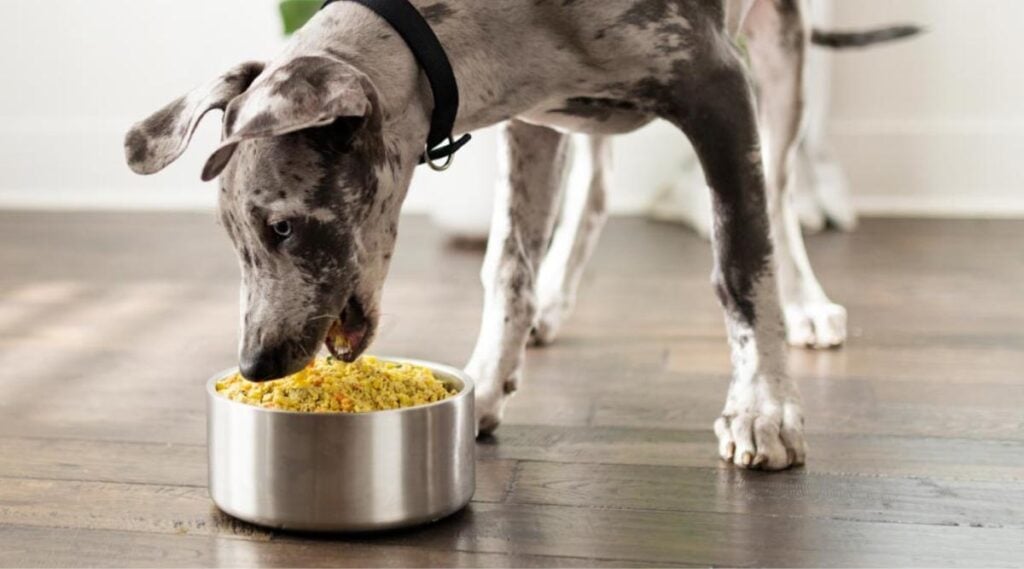
If you adopt a dog from a shelter, there are some exercises you can do to prevent your new pet from developing undesirable guarding behavior. Start by feeding your dog by hand a few times. Sit with your dog and feed him his kibble one morsel at a time. As you feed your dog, stroke him, and talk gently to your pet. If the dog is wary or appears uncomfortable, stop feeding him.
If your dog is happy and calm with hand feeding, put some kibble into his bowl and hold the dish on your lap while he eats. Repeat the process a few times, and then place your dog’s bowl on the ground. As he eats, you can reach down occasionally to drop a morsel of something tasty into the bowl. Repeat the exercise over the first few months of your new dog’s time with you. Your dog should stay relaxed and calm throughout this process because he won’t feel threatened.
Eventually, you should be able to remove the dog’s bowl of food from him without protest. However, be sure to return the food to your dog right away, ideally after you’ve added a small treat to his dish.
Exercises To Break Food Guarding
The treatment that animal behaviorists use to cure dogs who exhibit food-guarding behavior includes counterconditioning and desensitization. The following exercises should be carried out in stages. Only move on to the next step when your dog is relaxed and shows no signs of becoming aggressive.
Before you begin, cut some tasty treats such as chicken, cheese, or hotdogs into small bite-size pieces. The idea is to show your dog that you have something especially tasty for him that’s much more interesting than the contents of the bowl.
Stage #1
- Allow your dog to eat some dry kibble from a bowl on the ground. Stand away from the dog and don’t move toward him.
- Talk to your dog in a friendly, conversational tone, and at the same time, throw a special treat toward your pet’s dish. Continue to do this until the dog has eaten all the kibble.
- Repeat the exercise every time you feed your dog for at least ten meals in a row until he’s totally relaxed.
- If your dog approaches you for more treats, ignore him. Wait for your pet to go back to eating his kibble before you throw him more tasty treats.
Stage #2
- Repeat the Stage #1 exercise but this time, take a step toward your dog and throw a treat close to the bowl. Immediately take a step back. Keep repeating this exercise until your dog has finished his bowl of food.
- Every day, take a step closer to your dog before you throw your pet a special treat. Keep that up until you are within a couple of feet of your dog’s bowl.
- Keep repeating the exercise for at least ten meals until your dog stays completely relaxed.
Stage #3
- This time, you’re going to walk right up to your dog’s bowl, drop a treat right into it, and then immediately walk away.
- Continue repeating this exercise until your dog has finished his meal. Once your dog stays relaxed for at least ten meals in a row, move on to the next stage.
Stage #4
- As in the previous stages, approach your dog while he’s eating a bowl of kibble. This time, stand right next to your dog and bend down slightly to offer him a special treat from your hand. Encourage your dog to stop eating and take the treat from you.
- Once your dog has taken the treat from your hand, walk away. Keep repeating this exercise until your dog has finished eating the bowl of kibble.
- Every day, bend down a little more to offer your dog a treat, moving your hand an inch or two closer to the bowl of kibble. Repeat this process until you can hold a treat right next to the dish of food.
- Once your dog has eaten his food and stayed relaxed for ten meals in a row, move on to the next stage.
Stage #5
- Approach your dog while he’s eating from the bowl of kibble. Bend down and touch the bowl, offering your pet a treat with your other hand.
- Repeat this process until the dog has eaten all the food in the bowl.
- After your dog has eaten ten meals in a row without showing no signs of aggression or tension, move onto the next stage.
Stage #6
- Approach your dog, holding a special treat in one hand. Standing next to your dog, pick up the bowl of food, raising the dish only a few inches off the floor. Drop a special treat into the bowl. Immediately replace the food dish on the ground so that your dog can eat his food.
- Repeat the exercise, raising the bowl a little higher off the ground each time until you can lift it right up to your waist and stand upright.
- Repeat the exercise, but this time, take the bowl to a counter and place a special treat into the dish.
- Return to your dog and put the bowl down in the same place on the ground.
Stage #7
Finally, you need to have all the members of your household work through stages #1 through #6. Don’t make the mistake of assuming that your dog will be happy for everyone to remove his food bowl from him. Your pet needs to learn that these rules work in the same way for every member of his human “pack.”
Troubleshooting Tips
Here are three vital tips to remember when working to discourage food-guarding behavior.
- Never leave bowls of food out for your dog. If your pet exhibits food-guarding behavior, you should not allow your dog free access to food. Only feed your dog at regular times each day.
- Do not try to scold or punish your dog if he guards food. Dogs guard food because, in the wild, they would naturally compete for this valuable resource. If you try to dominate your dog, you could cause the food guarding to get worse, and the situation could become dangerous.
- Change your dog’s behavior by using systematic, patient desensitization and conditioning exercises as we’ve outlined earlier in this article.
If your dog persists in guarding his food, you should seek the advice of a professional dog behaviorist.
Final Thoughts
Waking a dog while he’s sleeping and trying to take his food away from him can be dangerous and sometimes leads to people being bitten. Be sure to educate your kids and other members of your household about the importance of letting a sleeping dog lie. Also, if your dog displays guarding behavior around food or other possessions, undertake a program of desensitization and counterconditioning to help address the issue. If you continue to experience problems with your dog’s behavior, refer him to a specialist canine behaviorist.
